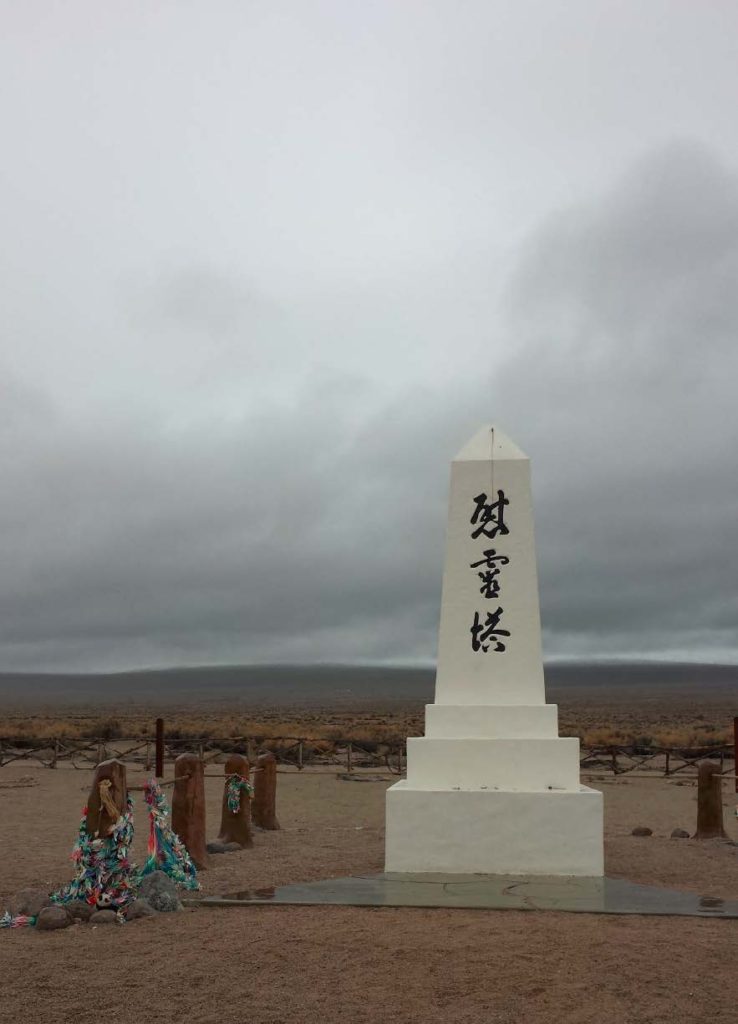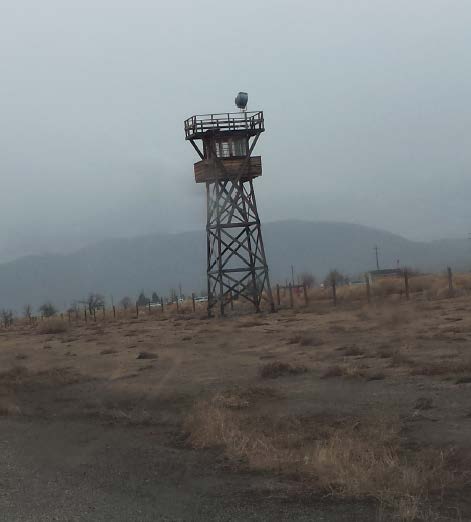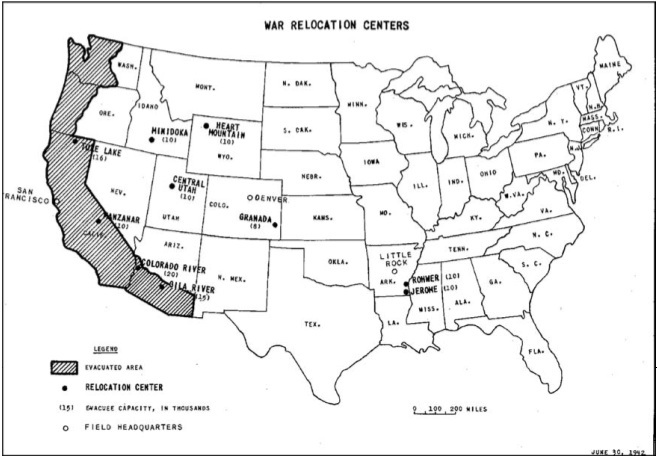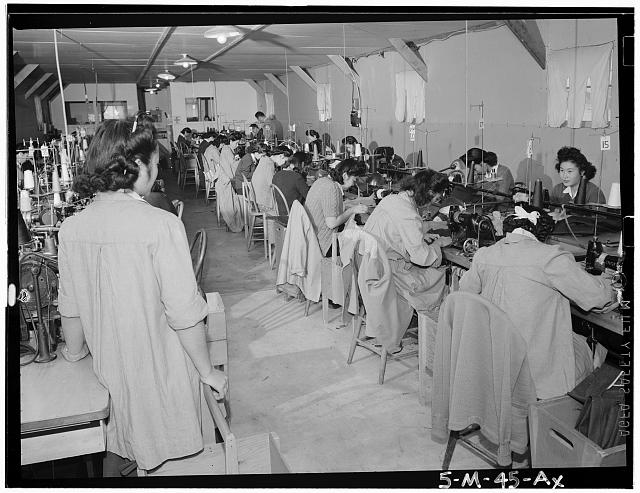WASHINGTON (AP) — Analysts at the Homeland Security Department’s intelligence arm found insufficient evidence that citizens of seven Muslim-majority countries included in President Donald Trump’s travel ban pose a terror threat to the United States.
A draft document obtained by The Associated Press concludes that citizenship is an “unlikely indicator” of terrorism threats to the United States and that few people from the countries Trump listed in his travel ban have carried out attacks or been involved in terrorism-related activities in the U.S. since Syria’s civil war started in 2011.
Trump cited terrorism concerns as the primary reason he signed the sweeping temporary travel ban in late January, which also halted the U.S. refugee program. A federal judge in Washington state blocked the government from carrying out the order earlier this month. Trump said Friday a new edict would be announced soon. The administration has been working on a new version that could withstand legal challenges.
Homeland Security spokeswoman Gillian Christensen on Friday did not dispute the report’s authenticity, but said it was not a final comprehensive review of the government’s intelligence.
“While DHS was asked to draft a comprehensive report on this issue, the document you’re referencing was commentary from a single intelligence source versus an official, robust document with thorough interagency sourcing,” Christensen said. “The … report does not include data from other intelligence community sources. It is incomplete.”
The Homeland Security report is based on unclassified information from Justice Department press releases on terrorism-related convictions and attackers killed in the act, State Department visa statistics, the 2016 Worldwide Threat Assessment from the U.S. intelligence community and the State Department Country Reports on Terrorism 2015.
The three-page report challenges Trump’s core claims. It said that of 82 people the government determined were inspired by a foreign terrorist group to carry out or try to carry out an attack in the United States, just over half were U.S. citizens born in the United States. The others were from 26 countries, led by Pakistan, Somalia, Bangladesh, Cuba, Ethiopia, Iraq and Uzbekistan. Of these, only Somalia and Iraq were among the seven nations included in the ban.
Of the other five nations, one person each from Iran, Sudan and Yemen was also involved in those terrorism cases, but none from Syria. It did not say if any were Libyan.
The report also found that terrorist organizations in Iran, Libya, Somalia and Sudan are regionally focused, while groups in Iraq, Syria and Yemen do pose a threat to the U.S.
The seven countries were included in a law President Barack Obama signed in 2015 that updated visa requirements for foreigners who had traveled to those countries.
Christensen said the countries were also selected in part because they lacked the ability to properly vet their citizens and don’t cooperate with U.S. efforts to screen people hoping to come to the U.S.
The report was prepared as part of an internal review Trump requested after his executive order was blocked by the 9th U.S. Circuit Court of Appeals. It was drafted by staff of the Homeland Security Department’s Intelligence and Analysis branch at the direction of its acting leader, David Glawe.
White House spokesman Michael Short said this was not the full report that Trump had requested. He said he believes “the intel community is combining resources to put together a comprehensive report using all available sources, not just open sources, and which is driven by data, not politics.”
The intelligence document was circulated beyond Homeland Security.
The draft document reflects the tensions between the president’s political appointees and the civil servants tasked with carrying out Trump’s ambitious and aggressive agenda. Trump has repeatedly complained about leaks meant to undercut his policies and suggested he does not trust holdovers from the Obama administration.
Trump originally said the ban was necessary to overhaul the vetting system for both refugees and would-be foreign visitors, saying that terrorists may try to exploit weaknesses to gain access to the United States. The order sparked chaos, outrage and widespread protests, with travelers detained at airports and panicked families searching for relatives.
But several courts quickly intervened and the 9th Circuit ultimately upheld a ruling blocking the ban and challenged the administration’s claim that it was motivated by terrorism fears.
Trump’s ban temporarily barred citizens from the seven countries from coming to the United States for three months. The order also temporarily shut down the U.S. refugee program for four months and indefinitely banned anyone from Syria.
A senior administration official told the AP on Sunday that a draft of the revised order will target those same seven countries. The official would not be named discussing the document before it is made public.
In a speech to the Conservative Political Action Committee Friday, Trump reiterated his claims on terrorism.
“We are going to keep radical Islamic terrorists the hell out of our country,” Trump said.
He said he singled out the seven countries because they had already been deemed a security concern by the Obama administration.
tRumped up threat from “7 countries”
February 24th, 2017

Department of Homeland Security Report says the “7 countries” pose little threat.

I’ve been reading “By Order of the President” about Roosevelt’s signing of Executive Order 9066, beginning internment of American Japanese, and the factors leading up to EO0966. With the stroke of a pen, and with no due process, Roosevelt enacted the will of racist fear-mongering, where official reports of those charged with evaluating the potential threat stated that there was no threat to the US from Japanese Americans.
With tRump’s signing of EO13769, a first step of the Muslim Ban, promised specifically as such in his campaign, and still specifically stated in writing on tRump’s campaign site (he leaves this up, what?!?), and the multiple restraining orders stopping enforcement of EO13769, I followed closely the Washington state and Minnesota challenges, and started digging into Constitutionality of such EOs. And when planning our vacation, I learned of Manzanar National Historic Site, and put it on the agenda. … sigh… it was awful… and it was good. The U.S. likes to pride itself on “openness” and “melting pot” but we are not. This is real. Japanese immigrants were prohibited by the Immigration Act of 1924 from becoming citizens! Japanese immigrants were prohibited from owning land in the U.S. 100,000+ Japanese Americans were rounded up like cattle, with little notice, were forced to sell at fire-sale prices or walk away from everything they owned but what they could carry, and were imprisoned for years. This history is something that should be specifically part of secondary education, something everyone should become familiar with.
And in reading “By Order of the President” by Greg Robinson, the similarities of how that was set up, framed, the events and campaigns prior to Roosevelt’s signing of EO9066 and Japanese internment; and how the Muslim Ban has been set up, framed, prior to EO13769, a step toward the Muslim Ban. Roosevelt’s administration charged agencies and individual staff with evaluating the potential risk and threat posed by Japanese Americans before and after Japan’s attack on Pearl Harbor, and consistently, the reports were that the Japanese Americans in Hawaii and the West Coast posed very little risk, they were deemed loyal to the U.S., and eager to demonstrate that loyalty, whether immigrants or first generation Americans. Roosevelt disregarded or downplayed the intelligence in those reports, and claimed a national security crisis and proceeded with internment. Now, tRump has a similar plan, one to ban Muslims, claiming a national security need. The federal courts issued restraining orders regarding both individual plaintiffs, and in Washington’s and Minnesota’s challenge of the Constitutionality of EO13769. and the federal Court of Appeals upheld the WA/MN restraining order, specifically noting that the government had not produced any evidence that this was a national security issue. The report released today is additional evidence that this is not a “national security” issue.
The Associated Press released a report from Dept. of Homeland Security that shows that the “7 countries” that are subject of EO13769 have little terrorist risk. Here’s the primary document:
And here’s the AP article with background (it’s also in STrib):
DHS intel report disputes threat posed by travel ban nations
By VIVIAN SALAMA and ALICIA A. CALDWELL
51 minutes ago
75 years ago – America’s Shameful Japanese Internment
February 18th, 2017
 Photo of Memorial taken yesterday at Manzanar — eerily similar to Wounded Knee
Photo of Memorial taken yesterday at Manzanar — eerily similar to Wounded Knee
America’s internment of Japanese Americans… It began with an Executive Order, after some groundwork was laid. Does this sound familiar?
Yesterday, Alan Muller and I visited the Manzanar National Historic Site. Every American should be required to spend a day there and learn of our treatment of Japanese Americans during WWII.

Manzanar, near Independence, California (really, “Independence”). It’s the site of one of the ten Japanese internment camps, and yes, it was a prison camp. Guard towers, armed guards keeping people inside the camp. People who were rounded up and “evacuated” from their homes, their businesses, their communities, and put behind barbed wire.

How did this happen the United States of America? Look around, right now, at what is happening and you’ll see that we’re on the path to repeat this ugly history.
On February 19, 1942, President Franklin Roosevelt signed Executive Order 9066, the order directing capture, rounding up, and internment of Japanese Americans during World War II. It’s fairly short, with a misleading heading, and far-reaching impacts:
Executive Order 9066 February 19, 1942
Authorizing the Secretary of War to Prescribe Military Areas
Whereas the successful prosecution of the war requires every possible protection against espionage and against sabotage to national-defense material, national-defense premises, and national-defense utilities as defined in Section 4, Act of April 20, 1918, 40 Stat. 533, as amended by the Act of November 30, 1940, 54 Stat. 1220, and the Act of August 21, 1941, 55 Stat. 655 (U.S.C., Title 50, Sec. 104);
Now, therefore, by virtue of the authority vested in me as President of the United States, and Commander in Chief of the Army and Navy, I hereby authorize and direct the Secretary of War, and the Military Commanders whom he may from time to time designate, whenever he or any designated Commander deems such action necessary or desirable, to prescribe military areas in such places and of such extent as he or the appropriate Military Commander may determine, from which any or all persons may be excluded, and with respect to which, the right of any person to enter, remain in, or leave shall be subject to whatever restrictions the Secretary of War or the appropriate Military Commander may impose in his discretion. The Secretary of War is hereby authorized to provide for residents of any such area who are excluded therefrom, such transportation, food, shelter, and other accommodations as may be necessary, in the judgment of the Secretary of War or the said Military Commander, and until other arrangements are made, to accomplish the purpose of this order. The designation of military areas in any region or locality shall supersede designations of prohibited and restricted areas by the Attorney General under the Proclamations of December 7 and 8, 1941, and shall supersede the responsibility and authority of the Attorney General under the said Proclamations in respect of such prohibited and restricted areas.
I hereby further authorize and direct the Secretary of War and the said Military Commanders to take such other steps as he or the appropriate Military Commander may deem advisable to enforce compliance with the restrictions applicable to each Military area hereinabove authorized to be designated, including the use of Federal troops and other Federal Agencies, with authority to accept assistance of state and local agencies.
I hereby further authorize and direct all Executive Departments, independent establishments and other Federal Agencies, to assist the Secretary of War or the said Military Commanders in carrying out this Executive Order, including the furnishing of medical aid, hospitalization, food, clothing, transportation, use of land, shelter, and other supplies, equipment, utilities, facilities, and services.
This order shall not be construed as modifying or limiting in any way the authority heretofore granted under Executive Order No. 8972, dated December 12, 1941, nor shall it be construed as limiting or modifying the duty and responsibility of the Federal Bureau of Investigation, with respect to the investigation of alleged acts of sabotage or the duty and responsibility of the Attorney General and the Department of Justice under the Proclamations of December 7 and 8, 1941, prescribing regulations for the conduct and control of alien enemies, except as such duty and responsibility is superseded by the designation of military areas hereunder.
Franklin D. Roosevelt
The White House,
February 19, 1942.
These are the areas picked for “from which any or all persons may be excluded, and with respect to which, the right of any person to enter, remain in, or leave shall be subject to whatever restrictions the Secretary of War or the appropriate Military Commander may impose in his discretion.”

The striped areas including all of California, and parts of Washington, Oregon and Arizona were deemed Over 100,000 Japanese Americans were torn out of their homes, picked up, and put in “internment” camps, concentration camps by another name. The states on the west coast were declared “military areas” of exclusion. Though the word “Japanese” was not stated in the Executive Order, it built on racism and fear racheted up by the government in years prior, pushed by hatred of powerful and wealthy ones who stood to gain from internment, and who stood to gain from the resources Japanese Americans were forced to leave behind. With little notice, and no due process, Japanese Americans were rounded up, put on trains, trucks, or took their own vehicles to the assembly areas, staging for shipment to the internment camps like so much cattle. The photos and films of this process are disturbing, much like Holocaust scenes of people shoved into the backs of trucks, peering out through gates; of trains tightly packed with children waving, even holding American flags; of people standing in line with whatever possessions they could carry; of so many with expressions of horror, fear, anguish, and anxiety.
Life in the camps was hard. Camps were isolated in rugged and unforgiving terrain. Make no mistake about it, they were prison camps, with guard towers and barbed wire — no one could go out, until later when some were allowed to move east, if they were able to demonstrate that they had a job, a home, and that they would not be a burden on society. On arrival at the camps, they were assigned barracks, grouped by families or just put into a room with strangers, with nothing other than what little they could carry on their journey, and were given a straw mattress. Showers and toilets were primtive with no privacy. There was a network of mess halls for meals and prisoners did the cooking, making do with what resources they had, farming, raising poultry and livestock, with Over time, people made minimalist furniture, sewed clothes, established a hospital, newspaper, gardens, cemetary, and a camp system of government. There were jobs for prisoners, from cooking, to sewing camouflage nets, to construction at the camp. There were schools for children and adults, a choir, sports, but it was not fun and games. They could not leave, and knew they had lost everything when they were forced to leave.
During internment, prisoners were presented with a loyalty oath, which was problematic, because they were imprisoned, their human and civil rights were disregarded, yet they were asked to declare loyalty to America, the same America that had stolen their lives and possessions and imprisoned them! At that time they were not allowed to become citizens, and yet if from Japan they were asked to renounce their Japanese citizenship, and would then be without a country.
If you dig into the archives, you’ll also see photos and films of people dressed in finery, as if going on vacation — I’d guess these were the government propaganda photos, or films like this:
From that film, at 24:40:
We’re setting a standard for the rest of the world in the treatment of people who may have loyalty to an enemy nation. We are protecting ourselves without violating the principles of Christian decency.
Oh, right, this is an example of Christian principles?
Dorthea Lange – Inside a Barrack:

Dorthea Lange – Grandfather and Grandson:

Here’s a collection by Ansel Adams from the Library of Congress (Rights Advisory: No known restrictions on publication) showing day to day life in the Manzanar camp:
Ansel Adams’s Photographs of Japanese-American Internment at Manzanar
From that collection, “Sumiko Shigematsu, foreman of power sewing machine girls, Manzanar Relocation Center, California”

Remember that this internment of Japanese Americans began with an Executive Order? Well, I’ve been tracking the tRump Executive Orders, and in particular the Muslim Ban of EO 13769 and the many court cases challenging it on behalf of particular plaintiffs, affected by the Executive Order, and most importantly, the Constitutional challenges of the states of Washington and Minnesota.
EO13769 -Protecting the Nation From Foreign Terrorist Entry Into the United States
This is how it starts, openly blatantly campaigning on a Muslim Ban, and don’t forget his statements at the airport hangar in Minneapolis:

It’s up to us to make sure this does not happen again.
Some previous Legalectric posts:
Yesterday, I picked up a copy of “By Order of the President: FDR and the Internment of Japanese Americans,” written by Greg Robinson.
 A review blurb on the back says it well, why we need to pay close attention NOW (more on this after I have some time to ruminate and digest):
A review blurb on the back says it well, why we need to pay close attention NOW (more on this after I have some time to ruminate and digest):
Robinson’s book reminds us that panicky acts in a national crisis that sacrifice rights for which we claim to fight emerge not just from immediate insecurity but from deeper prejudices and fears…
Executive Orders… that’s how we got EO13769. tRump’s EOs have been weird. After making “Obama’s illegal Executive Orders” a campaign meme, he fires off messy, illogical, and yes, illegal ones of his own, and like Obama, it’s not just Executive Orders, it’s multiple Memoranda. You can find them on the White House Presidential Actions page and at the Federal Register – Agencies – Executive Office of the President. It wasn’t easy. It took days for Executive Orders and Memoranda to show up, and so it was impossible to know exactly what he was doing, but then, it looks like he didn’t know what he was doing either. For example, I was concerned about his Dakota Access Pipeline action, Trump_Memorandum Dakota Access (note it is NOT an Executive Order). In checking that out, I found an error (and fired off a missive to the White House Contact Page)! You can see both versions here, they’ve filed a corrected one.
More importantly, this also happened with the Muslim Ban, EO13769, which I went over with a fine tooth comb because I don’t know much about immigration law. The EO in Sec. 8 cites 8 U.S.C. 1222 which is about a physical examination, so I’d also sent a demand for correction to the White House. It’s still wrong, LOOK AT SEC. 8, it’s not been corrected!!! The Federal Register publication of EO13769 is correct.
Thankfully I wasn’t the only one looking. Turns out there was a lot more than that, the versions published on the White House Presidential Actions page were not the same as those signed and sent for publication in the Federal Register. WHAT?!?!
WH posts wrong versions of Trump orders
White House posts wrong versions of Trump’s orders on its website
That there’s been insufficient thought and vetting of these Orders and Memoranda is obvious. You’d think that where an Executive Order such as EO13769 takes such sweeping steps to exclude a classification of people from the US that they’d give best efforts toward accuracy.
Substantively, the Muslim Ban that is EO13769 is not about national security, that much is clear from the government’s arguments, more correctly the government’s lack of any evidence that it was about national security, and Washington’s evidence, as above, from tRump’s campaign website that the purpose was to prevent Muslim immigration.
Japanese internment. Muslim ban. Think it can’t happen here, again? It’s been slowed, but EO13769 has not yet been revoked, and the anti-Muslim sentiments remain displayed on tRump’s campaign site.
NEVER AGAIN!
BE VIGILANT!
SPEAK UP!
TO DO: FIVE ACTIONS A DAY
It doesn’t take much to make a difference — and each of us must do what we can do. We each have different unique skills and abilities which America needs right now.

